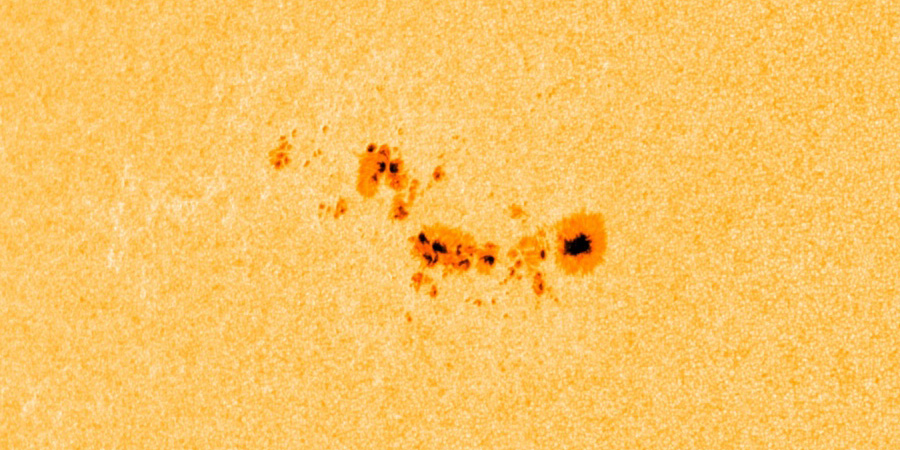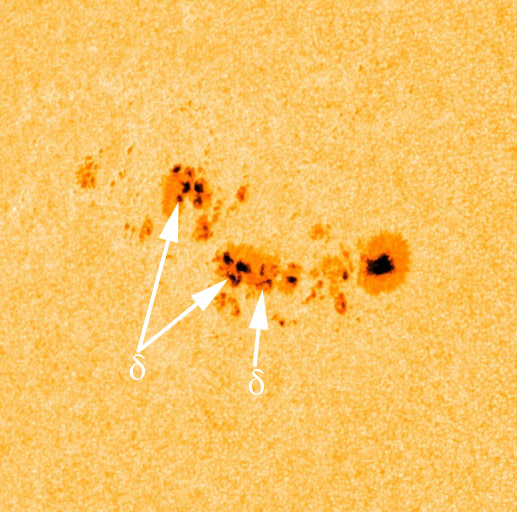Sunspot region 2205, SDO is back
Friday, 7 November 2014 13:17 UTC

Solar activity is at moderate levels since our last update with three R1-minor events, all from sunspot region 2205: M2.7 at 02:49 UTC, M2.0 at 04:25 UTC and at 10:22 UTC we saw an M1.0 solar flare. Numerous coronal mass ejections were observed over the past 48 hours including some from sunspot region 2205 but none of them were earth-directed. LASCO data is not fully available yet to analyse the three M-class from today but we do not expect that they launched any earth-directed coronal mass ejections. We are also happy to tell you that we are receiving up-to-date data again from the NASA Solar Dynamics Observatory and this means we can take a closer look at sunspot region 2205 and see what more we can expect from it.
Sunspot region 2205
Now that SDO data is back we can finally tell something more about sunspot region 2205 it's development and magnetic complexity. The faculae that surrounded the region when it turned into view is now all gone, which is a good sign. New spots formed near the leader spots with further strengthening in the central part and in the trailing part there were also some new spots visible. As it was clear a few days ago, we had several delta spots in development, the region also showed lots of activity so we could say that it kept it's magnetic complexity.
In the latest imagery from SDO we can indeed conclude that multiple delta structures are present within the central and trailing parts of this sunspot region. The opposite polarity sunspots are close to the other polarity making it a compact and complex region that harbors energy for more M-class solar flares (R1-R2) and even a small chance for a low-level X-class (R3) event. This sunspot region is not yet in a great geo-effective position but it is now rotating more and more into a better position for any eruptions to be earth-directed.
M-class flare probability for the coming 24 hours: 70% chance
X-class flare probability for the coming 24 hours: 20% chance

All the other sunspot regions on the disk are unremarkable and unlikely to produce strong solar flares. Any future solar flares will very likely be centered around sunspot region 2205.
Images: NASA SDO.
Thank you for reading this article! Did you have any trouble with the technical terms used in this article? Our help section is the place to be where you can find in-depth articles, a FAQ and a list with common abbreviations. Still puzzled? Just post on our forum where we will help you the best we can!
Latest news
Latest forum messages
Support SpaceWeatherLive.com!
A lot of people come to SpaceWeatherLive to follow the Sun's activity or if there is aurora to be seen, but with more traffic comes higher server costs. Consider a donation if you enjoy SpaceWeatherLive so we can keep the website online!

Space weather facts
| Last X-flare | 2024/03/28 | X1.1 |
| Last M-flare | 2024/04/19 | M2.1 |
| Last geomagnetic storm | 2024/04/16 | Kp5 (G1) |
| Spotless days | |
|---|---|
| Last spotless day | 2022/06/08 |
| Monthly mean Sunspot Number | |
|---|---|
| March 2024 | 104.9 -19.8 |


